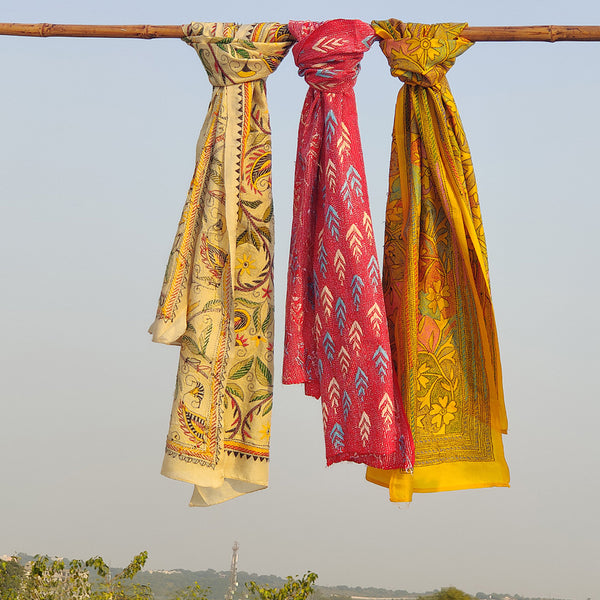Nalini was very excited. She was going for a picnic with her friends...
Out of her village, into the city, to the museum.
“Don’t forget my surprise,” said her little brother, Ved, as Nalini rushed off to the bus.
The bus drove past Nalini’s village, the colourful houses, the busy market,
the sugarcane juice seller, onto bridges and highways and into the big city.
It drove past cars and rickshaw drivers, past handcart pullers and dabbawallas,
past big buses and small taxis when at last it reached the museum!
Nalini and her friends looked in wonder at the enormous building.
It had towers and domes, bell-shaped windows, arches and curved doors.
Ved would love to peep through those windows, thought Nalini.

Nalini and her friends entered the museum. There were so many old and
exciting things to see!


The first room they entered had large cabinets. In these were clothes.
Sarees,Lehengas,Dhotis.Some with mirrors and some with gems.
Sparkly, shiny, glittery. Ved would love to try the turban, thought Nalini.

Nalini heard excited shouts from the next room. What had her friends seen?
Weapons! Arrows, Swords, Maces.
Some sharp and some spiky. They were scary.
Maybe, thought Nalini, Ved would not love this room. Too much fighting

Nalini ran to the next room with her friends.
This one has filled with games hundreds of years old, Pachisi.
PallanguliGanjifa cards. Games with names that Nalini had never
heard before.
Ved would love to learn these games and beat me at them, thought Nalini.

Nalini was tired. There were many more rooms to see in the museum,
but the day was done. Oh no! She still didn’t have a surprise for Ved.

I know, thought Nalini, I will buy him a ticket to the museum.
We can return together.
What is the story behind the illustrations?
This book has been illustrated in the Kalighat Patua style. In West Bengal, patuas or village artists created long paintings with mythological folklore rolled into scrolls. Patuas would wander from village to village, roll out the scroll and sing the story.
In the late 19th century, some traditional patuas received training in European art styles and began the Kalighat Pat school of art. Apart from mythology, in their works, Kalighat Patua artists have tackled issues like famine, floods, elections, global warming, and even the recent COVID-19 pandemic.
This content is originally posted at Story Weavers.
Blogs you might also like:
The Prehistoric Period Interest in Indian Muslin FabricAll You Need to Know About Dhokra Art
Ethnic Indian Home Decor - Mesmerising Crafts











Leave a comment (all fields required)